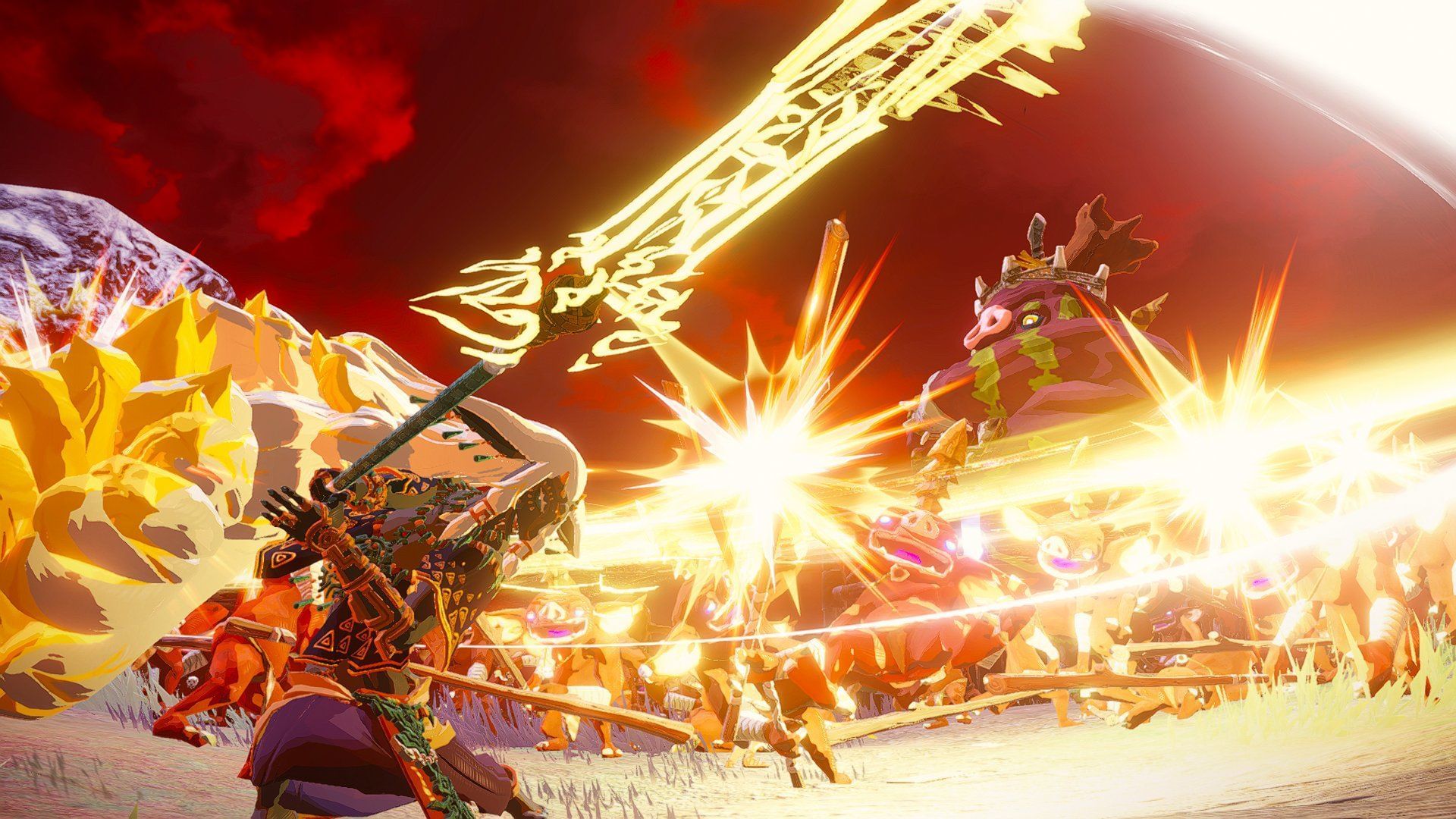Hyrule Warriors Age of Imprisonment is an all-new chapter in the hack & slash crossover saga from Nintendo and Koei Tecmo. This new chapter builds upon the world and elements introduced in the critically acclaimed 2023 sandbox game, The Legend of Zelda Tears of the Kingdom. As such, newcomers may be wondering what sets the two apart since they are both entries in the same franchise.
Here's everything to know about the differences and similarities between the two, Read on to know more.
Also Read: 7 best beginner tips and tricks for Hyrule Warriors Age of Imprisonment
Hyrule Warriors Age of Imprisonment vs The Legend of Zelda Tears of the Kingdom: 3 ways they are similar
 Hyrule Warriors Age of Imprisonment builds upon the foundations of Tears of the Kingdom (Image via Nintendo)
Hyrule Warriors Age of Imprisonment builds upon the foundations of Tears of the Kingdom (Image via Nintendo)Both are in the same universe
Hyrule Warriors Age of Imprisonment is canonically confirmed to take place during The Legend of Zelda Tears of the Kingdom, after Princess Zelda is sent to the centuries into the past. She participates in the Imprisoning War that was touched upon during the plot of the previous game, which centers around the conflict between the founders of Hyrule and the Demon King Ganondorf.
Familiar faces return for a new tale
Several characters introduced in The Legend of Zelda Tears of the Kingdom return, namely King of Hyrule Rauru and Queen Sonia, as well as some of the sages seen in flashbacks, like Mineru. Most of them are also playable, taking a first-hand role in the Imprisoning War.
Many inspired elements from Tears of the Kingdom
As a successor to The Legend of Zelda Breath of the Wild, Tears of the Kingdom introduces many new mechanics like Batteries, Zonai devices like EMitters, and more, which are seamlessly intervoven into the gameplay here. Additionally, many enemies also return, such as the Constructs, Gleeoks, and even the Gloom-infested foes.
Read More: Is it worth playing The Legend of Zelda Tears of the Kingdom in 2025?
Hyrule Warriors Age of Imprisonment vs The Legend of Zelda Tears of the Kingdom: 3 ways they are different
 Face the dangers of the Imprisoning War as described in The Legend of Zelda Tears of the Kingdom (Image via Nintendo)
Face the dangers of the Imprisoning War as described in The Legend of Zelda Tears of the Kingdom (Image via Nintendo)Both are different genres of games
Following in the footsteps of the previous Musou spin-off game, Hyrule Warriors Age of Calamity, this entry is also a hack & slash action game, with support for up to two player co-op. This is a stark contrast to the mainline entry, The Legend of Zelda Tears of the Kingdom, which was a purely single-player action-adventure game.
Linear action vs an open world
Additionally, Hyrule Warriors Age of Imprisonment is a linear game that sees players mow down hundreds of foes in a power fantasy across linear levels as players complete objectives. On the other hand, Tears of the Kingdom is a sprawling open world which has a focus on exploration and problem solving, not just combat.
Link is not the focus of this story
The protagonist Link has been a series mainstay for the vast majority of Legend of Zelda games, but he is missing from this entry. Since Zelda travels to the past during the Imprisoning War of the Wilds timeline, Link is nowhere to be found, as the plot is set centuries before his birth. Instead, players control several different characters partaking in the Imprisoning War, including Priness Zelda herself.
Check out more articles:
- All characters in Hyrule Warriors Age of Imprisonment and how to unlock them
- All difficulty settings in Hyrule Warriors Age of Imprisonment
- Is Hyrule Warriors: Age of Imprisonment 60 FPS on Nintendo Switch 2?
Why did you not like this content?
- Clickbait / Misleading
- Factually Incorrect
- Hateful or Abusive
- Baseless Opinion
- Too Many Ads
- Other
Was this article helpful?
Thank You for feedback
Are you stuck on today's Wordle? Our Wordle Solver will help you find the answer.
Edited by Siddharth Patil

.jpg) 1 hour ago
1
1 hour ago
1
 English (US)
English (US)